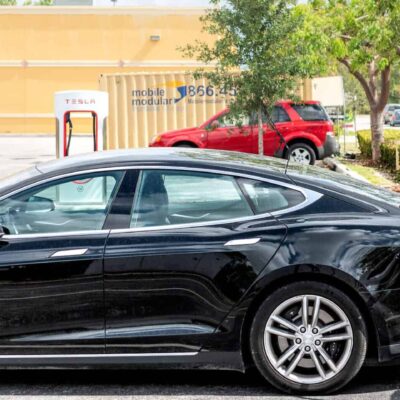The use and sources of energy are continually evolving, creating increased litigation risks and opportunities across industries from automotive to construction. At WIT, we keenly follow the latest trends and developments within key practice areas and affiliate with leading experts at the top of their fields. We had an opportunity to connect with mechatronics expert, Mahdi Shahbakhti, Ph.D., to discuss the impact of his energy flow research on energy system design, modeling, and control.
Dr. Shahbakhti is an Associate Professor of Mechanical Engineering and Director of Energy Mechatronics Lab at the University of Alberta and an Adjunct Associate Professor of Mechanical Engineering at Michigan Technological University.
He is the current Chair of the ASME-DSCD Automotive and Transportation Systems Technical Committee. From 2018-2020, Dr. Shahbakhti served as the Elected Chair of the ASME-DSCD Energy Systems Technical Committee. The activities of this technical committee included research on building efficiency, HVAC systems, and renewable energy.
Dr. Shahbakhti has worked as an expert witness on several IPR matters—both on the owner and petitioner sides—related to building HVAC systems and automobiles. He was also retained for a matter to be presented before the ITC and has been published in numerous scientific journals. He is a distinguished professor and mentor and has been invited as a featured speaker at various industry events.
1) How does your research impact innovations in infrastructure and the design of energy systems?
At a high-level, my field of expertise involves understanding the flow of energy and how best to optimize energy under different scenarios. My research entails the study of applying thermal-fluid sciences plus control mechanisms to the systems that consume energy. There are two main application areas for my work—one involving the automobile ranging from a conventional model to a hybrid vehicle to an electric car. The other is regarding HVAC systems in buildings and interactions with the electric power grid. My primary focus in both those areas is to look at the different sources of energy being used and the controls to optimize energy flow in those systems. My objective is to gain energy efficiency to provide cost savings and new ways of thinking about leveraging power flexibly. As an example, my work in buildings has centered on connecting the solar renewable energy consumed by PV (photovoltaic) panels and micro-CSP (concentrated solar power) platforms with HVAC systems as a way to generate electrical power and use thermal energy for heating. To achieve optimized energy flow requires an understanding of the system on both sides—the dynamics of how energy is being generated and how that energy needs to be controlled and utilized. The work we do here creates opportunities to consider optimal energy management to achieve energy efficiency and could help define how energy systems are designed in the future.
2) How does the use of Artificial Intelligence (AI) influence your research?
The use of AI in buildings is a big and growing area of interest where much research is being developed to optimize energy. Known as a “smart building”, the building incorporates sensing technology to monitor occupant activity. Sophisticated sensors are used to measure occupancy in units as well as occupant energy use behavior. The data collected from these sensors will allow us to identify patterns (e.g., in temperature use, in occupancy rate at certain times, and in electricity use) and know how much energy is needed to be stored at any given time. This knowledge, coupled with thermal-fluid sciences, enables us to create a sustainable, energy-efficient energy flow model.
Additionally, there are also sensors to provide real-time and continuous diagnostics of various devices within the system. That data allows us to pinpoint problems to correct quickly or adjust as needed, which is important to maintain energy efficiency.
3) Given your expertise in HVAC systems—which control building ventilation, temperature, and electricity—what research have you done related to HVAC design and control to minimize the transmission of COVID-19?
My lab has applied thermal-fluid sciences to identify methods of airflow control and filtration in confined spaces. We use flow modeling inside rooms to simulate the flow of particles that factor in temperature, airflow velocity, and ventilation rate based on a proposed number of people in the space. We examine how airflow is affected and distributed in different rooms as the number of people changes and the velocity in the rooms change. The challenge becomes a question of how to control that flow and apply that data into an HVAC system’s design model.
For instance, if we are looking at an HVAC zone, we ask—How many people are in that zone? How much fresh air is needed to come into that zone? What’s the velocity of the indoor space—building, office unit, house, department store—we’re reviewing? How is the ventilation system constructed? What’s the occupancy for each indoor space being measured?
By applying thermal-fluid sciences to understand how flow will happen and the factors involved, we can identify the risk of COVID-19 virus transmission and then apply or adjust controls for optimal ventilation design and operation. This includes adjusting the ventilation rate, airflow rate, and airflow direction while controlling the input air flow rate, velocity, temperature, and humidity.
My research focuses on optimizing the trade-offs between energy efficiency and risk-reduction. It was developed out of my ongoing work on modeling and multi-objective optimization and control of HVAC systems in buildings to enable minimum energy cost while meeting occupants’ comfort constraints based on ASHRAE standards.
My lab has been in discussions with different businesses to gauge their interest in moving towards the commercialization of our model. We’ve been in contact with a good number of HVAC companies as well.
4) And, how does your expertise enable your work as an expert witness for IPR matters?
My research relating to energy mechatronics, hybrid electric vehicles, connected and automated vehicles, low-temperature combustion engines, renewable energy, climate controls, and building-power grid integration has enabled me to work as a subject-matter expert on matters regarding vehicle energy controllers and building HVAC systems. I have worked on a number of patent infringement cases as a testifying expert witness and have experience working on an ITC matter.
As for academic credentials, I serve as the Chair of ASME-DSCD Automotive and Transportation Systems Technical Committee, was the 2018-2020 Chair of ASME-Dynamic Systems & Control Division (DSCD) Energy Systems Technical Committee, and am a member of the ASME-DSCD Mechatronic Technical Committee, IEEE CSS Technical Committee on Automotive Controls, and SAE Technical Committee on New Engines, Components, Actuators, and Sensors.
I am also Associate Editor of ASME Journal of Dynamic System Measurement and Controls. I have served on the review panel for the US National Science Foundation and the US Department of Energy for Building Technology Office (BTO) and Vehicle Technology Program (VTP) to review grant proposals and the assessment of funded projects. I have supervised and mentored nearly 120 graduate and undergraduate students, including 28 Ph.D., 63 M.S., and 28 B.S. students in Mechanical Engineering and Electrical Engineering in four academic institutions between 2010-2020.
Lastly, I have chaired and/or co-organized nearly 100 sessions in the areas of modeling, fault diagnosis, and control of energy systems at the American Control Conference, SAE World Congress, and ASME Dynamic Systems Control Conferences.
For more information about working with Mahdi Shahbakhti, Ph.D., contact a client manager at WIT.
“WIT includes a great group of friendly and knowledgeable people that have been readily available to consult with whenever I needed. They share their invaluable experience from handling a large range of expert witness cases.”
Mahdi Shahbakhti, Ph.D.
Check out our COVID-19 initiative and learn more about our Crisis Management and Energy practices. Follow us on LinkedIn and Twitter to stay up-to-date on our latest Q&As with WIT Affiliate Experts.




